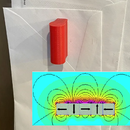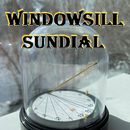Introduction: Transform a Tree Stump Into a Planter Box
Unfortunately one of the trees in our front yard died and I had to cut down. So what do I do with an unsightly tree stump in the front yard?
Well, I decided to turn it into a planter box for some beautiful flowers and you can too if faced with the same situation.
In hindsight I could have just placed a pot of flowers on the stump, put where is the creative challenge in that?
I decided to carve the 'pot' right into the stump. So here we go....
Supplies
- Tree Stump :-)
- Caulk (I used some acrylic-silicone caulk I had laying around)
- Crushed or decorative rock
- 1/4 inch drip irrigation line (optional)
- Drip emitter and other misc. drip irrigation items; pressure regulator, manifolds, etc. (optional)
- 1/2 inch drip irrigation line for drain (optional)
- Tree Sealant Spray; Spectracide Pruning Seal (optional; I also had this lying around)
Tools
- Chain saw
- 1 inch diameter auger drill bit
- 3/4 inch diameter auger drill bit, ≥2 foot long (or length as needed; potentially optional)
- Circular bubble Level with mounting tape (optional)
Step 1: Level the Top of the Stump
The first challenge was that the stump had an angled top surface which needed to be leveled out. In thinking about how to get this remaining stump surface level, I recalled that I had some circular spirit-bubble levels. I attached one of the circular bubble levels onto the bar of the chainsaw with double stick foam tape and used it to keep the chainsaw level in both axis for the stump leveling cut.
I was pretty successful, with only a bit of an angle to the new cut. It is hard to make 'course corrections' after the sawing starts so make sure you are level when you start.
When using the chainsaw make sure to wear the correct personal protective equipment.
Step 2: Drill Holes Outlining the Planter Area
I drilled holes into the stump in the rough outline of the larger planter box I wanted. I placed a piece of tape on the drill to act as a depth gauge so the holes would all be the same depth.
In hindsight I probably could have gotten away with only 9 holes; one in each corner and one on each side with a final one in the center. These holes are starting and midway points for the chainsaw cuts.
Step 3: 'connect' the Holes With the Chainsaw (cut Blocks)
I went about 'connecting' (cutting slots between) the holes with a chainsaw. This can be a dangerous task.
You need to be especially careful to avoid situations where you can have the chainsaw kickback. This occurs when the outbound portion of the chain contacts a surface. It can kick the chainsaw back right into your face.
As shown in the diagram, it is especially important to keep the chain at the top half of the tip of the chain bar from contacting surfaces. This can be difficult when sawing down a bored hole. So take special care.
Cutting between the holes resulted in 4 wooden blocks. Unfortunately they are still attached to the tree stump at their bases.
Kickback image from Timbercroc.com
Step 4: Undercut the Blocks to Free Them
I needed to break the blocks loose. I tried using a wedge between them but to no avail. I thought about making more and more slices with the chainsaw but didn't want to take the time and figured I would end up with just more small blocks still attached to the stump.
Soooo.... I came up with the idea to undercut the blocks from the rear of the stump and cut the blocks loose at their bases. Again, be careful to avoid kickback with the chainsaw.
The undercut worked perfectly and the blocks just lifted out of the planter box hole.
I'd like to thank jared larlham433 and the creator1 for the chainsaw Tinkercad file used in my graphic.
Step 5: Drill Drain / Irrigation Tube Hole
I thought it would be important to drill a drain hole in the bottom of the planter box so that it would not collect water and drown the plants. I drilled a 3/4-inch diameter hole in the bottom of the planter box angled downward and out the backside of the stump. I had a three-foot long drill bit from some remodel work I had done.
Of course the bit does not have to be as long as the one I used since you can drill a much shallower hole out the bottom of the planter box. If fact, you can even forego the drain hole and just rely on the undercut saw kerf cut created when freeing the blocks.
I like the angled drain hole as it drains near the ground and also provides a path for the drip irrigation tubing to be hidden as it goes up into the planter box.
Step 6: Insert Drain Tube
I used 1/2-inch drip irrigation tubing for the drain tube. It is optional since you could just leave the drain hole unlined, but I thought having a plastic tube in it would help prevent it from getting clogged.
Step 7: Caulk Unwanted Holes
I wanted to keep drain water from running out the undercut saw kerf opening in the back of the stump so I caulked it from inside the planter box and on the outside of the stump. I also had accidently overextended my undercut sawing and nicked the front bark from inside the stump as I extended the sawblade too far forward. In order to keep any drain water from running behind the front bark I caulked all the saw kerfs ('slits') in the planter box.
Step 8: Spray Top and Interior
Spraying the planter box was probably way overkill but since I already had the Pruning Seal spray, and it said it could be used to seal pots, I thought I would coat the inside of the planter box to make it more waterproof. I also sprayed the top of the stump to help keep it from deteriorating.
Step 9: Install Drip Irrigation (if Desired)
I threaded the drip irrigation tube up the drain tube and installed an emitter. It is probably the wrong flow rate, but I can dial that in later.
Step 10: Add Crushed Stone
In order to have the planter box drain well I added crushed rock to the bottom of it. This way water can find its way to the drain tube and the drain tube can be kept clear of potting soil.
Step 11: Add Potting Soil and Plants
Next I added some potting mix saturated with water. I then added my flowers and voila! No more unsightly tree stump but a nice planter with beautiful flowers.
Enjoy!

Participated in the
For the Yard














12 Comments
15 days ago
I did this with an old palm tree stump . I drilled a number of holes then used a hammer and chisel to join the holes and form the "pot". It was time consuming but strangely satisfying 😀 After 5 years the succulent is flourishing.
Reply 14 days ago
Thanks for sharing. That looks beautiful.
I had considered a succulent - maybe in the future.
18 days ago on Introduction
Excellent! I was trying to do something similar with a smaller log about 6 inches in diameter.
I want to use it as a hiding place for a geocache. I had no luck making a hole, but now I know how to do it.
Reply 18 days ago
Thanks for your comment. Good luck on your geocache hiding spot!
19 days ago
I like this idea a lot, not just for the planter aspect, but also to help degrade a stump without the lining/spraying of the stump part. I'm a little nervous using the chainsaw that way tho, so I may try an alternate method for that part, maybe a jigsaw like someone else mentioned.
Reply 18 days ago
Thanks for your comment. I had considered not spraying the inside of the cutout. The chainsaw was a bit tricky but the wood was tough. I'm always open to alternate methods. Thanks.
19 days ago
Very clever! Great low-cost alternative to grinding the stump out. Thanks.
Reply 18 days ago
Thanks for your comment!
19 days ago on Introduction
Hmmm.... since rotted wood is also considered a great soil amendment, this is a good idea. Of course after a number of years, the whole thing will have disintegrated, but you'll be able to enjoy it in the meantime.
Reply 18 days ago
I had considered not spraying the inside of the cutout. Thanks for your comment.
19 days ago
Like this idea, saw a few of these at an Adirondack inn that I recently visited. I'd suggest a jig saw to do the removal of the wood, using a chainsaw for this task seems extremely dangerous. Just make a bunch of cuts and then chisel out.
Reply 18 days ago
Thanks for your comment and suggestion.
I didn't consider a jig saw, I think primarily because of the depth of the cut and the wood was real tough. And unfortunately I could not locate my chisels. But it certainly would be a safer option.